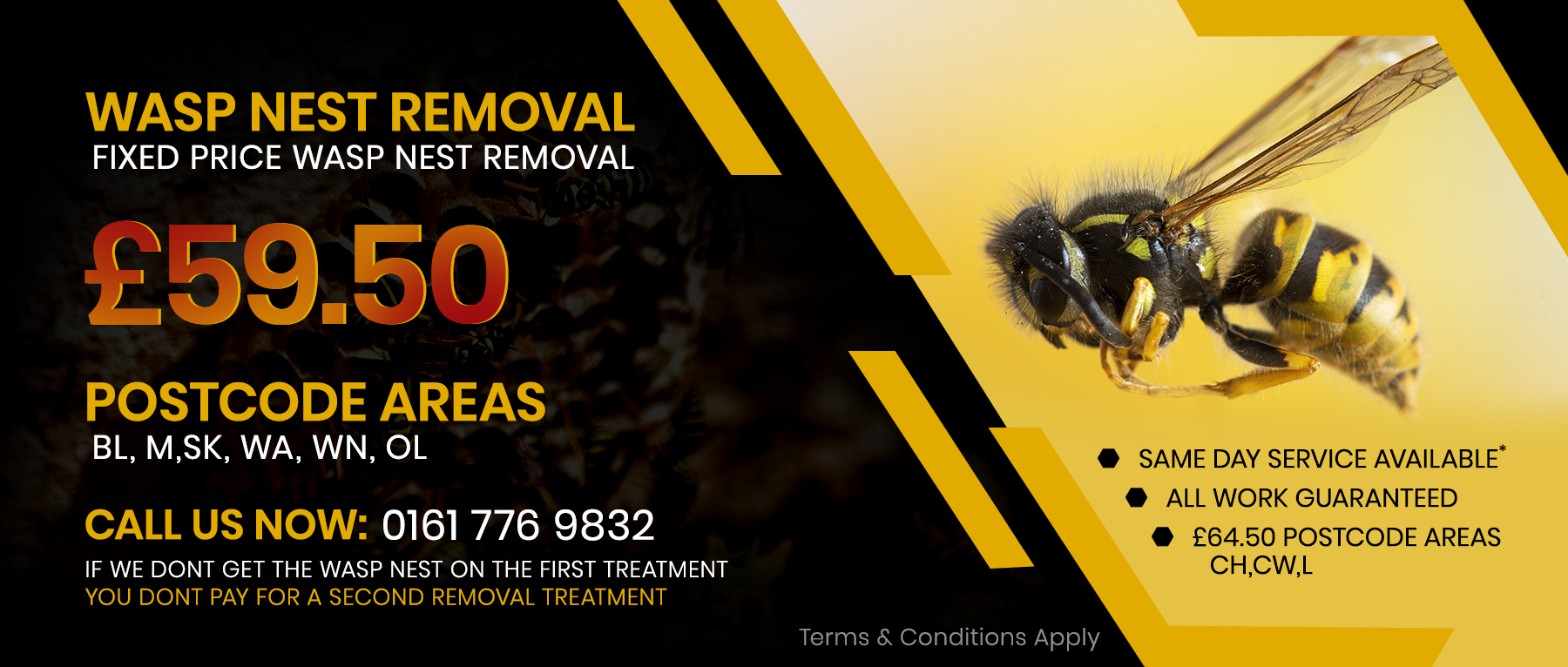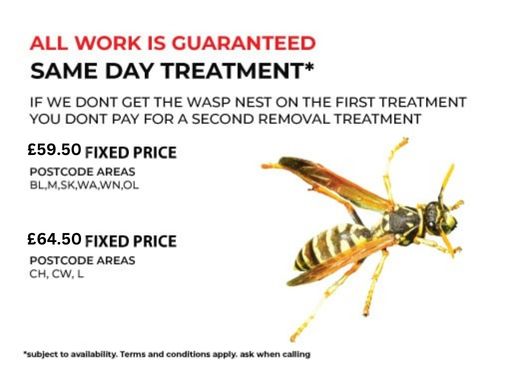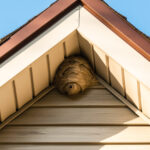

Need Help? Call us on 0161 776 9832 or drop us an email for expert pest control advice on how to identify pest infestations and help solve your problem.
A Guide To Stretford Wasp Nest Removal
Why Wasps Are A Danger
Wasps have a very painful sting. Unlike bees, they are able to sting more than once. The sting of the wasp is an ovipositor and is possessed only by the workers. All of the worker wasps are female. Social wasps,  including the hornet wasp, pose a danger to humans and pets. The hornet and other social wasps are able to admit a pheromone which allows them to attack en masse to any potential threat. This allows them to swarm and sting humans and animals multiple times.
including the hornet wasp, pose a danger to humans and pets. The hornet and other social wasps are able to admit a pheromone which allows them to attack en masse to any potential threat. This allows them to swarm and sting humans and animals multiple times.
In order to safely remove a wasp nest from your property, you should contact a Stretford wasp removal service. The Stretford wasp control service will be able to use a Stretford wasp nest removal treatment to safely eliminate the infestation. This Stretford wasp nest removal treatment when properly applied will remove the lost and the next without causing any damage to the surrounding area. Do not risk approaching or attempting to remove the wasp nest yourself. This can cause the worker wasps to attack in order to protect the hive.
The common wasp becomes an increasing nuisance, and in some cases danger, during Summer. These wasps widespread and commonly encountered throughout the United Kingdom. Here you can learn how to identify the common wasps and their nests. You will also learn what to do if a wasp nest is found.
The Common Wasp And Their Nests
The Queen wasp emerges from hibernation in spring. The Queen will then look for a location to start a new wasp colony. The Queen would usually locate the wasp nest in a place that is sheltered. Some of the most common locations include:

* The hollows of trees
* The loft or attic of a house
* Underneath decks and stairs
* Amongst piled wood
* In-wall cavities of the building
Once the location has been chosen by the Queen, she will use chewed up wood pulp to form the basis of the nest. She begins by laying eggs which will develop into workers. Once the workers have matured they will take over the duties of the Queen. This includes caring for a nest, gathering food and protecting it from intruders. The Queen will be responsible only for laying more eggs. At the end of autumn once enough eggs have been developed into queens and males they will leave the nest. The new queens will look for places a hibernate during the coming colder months and the males and the existing colony will die out.
